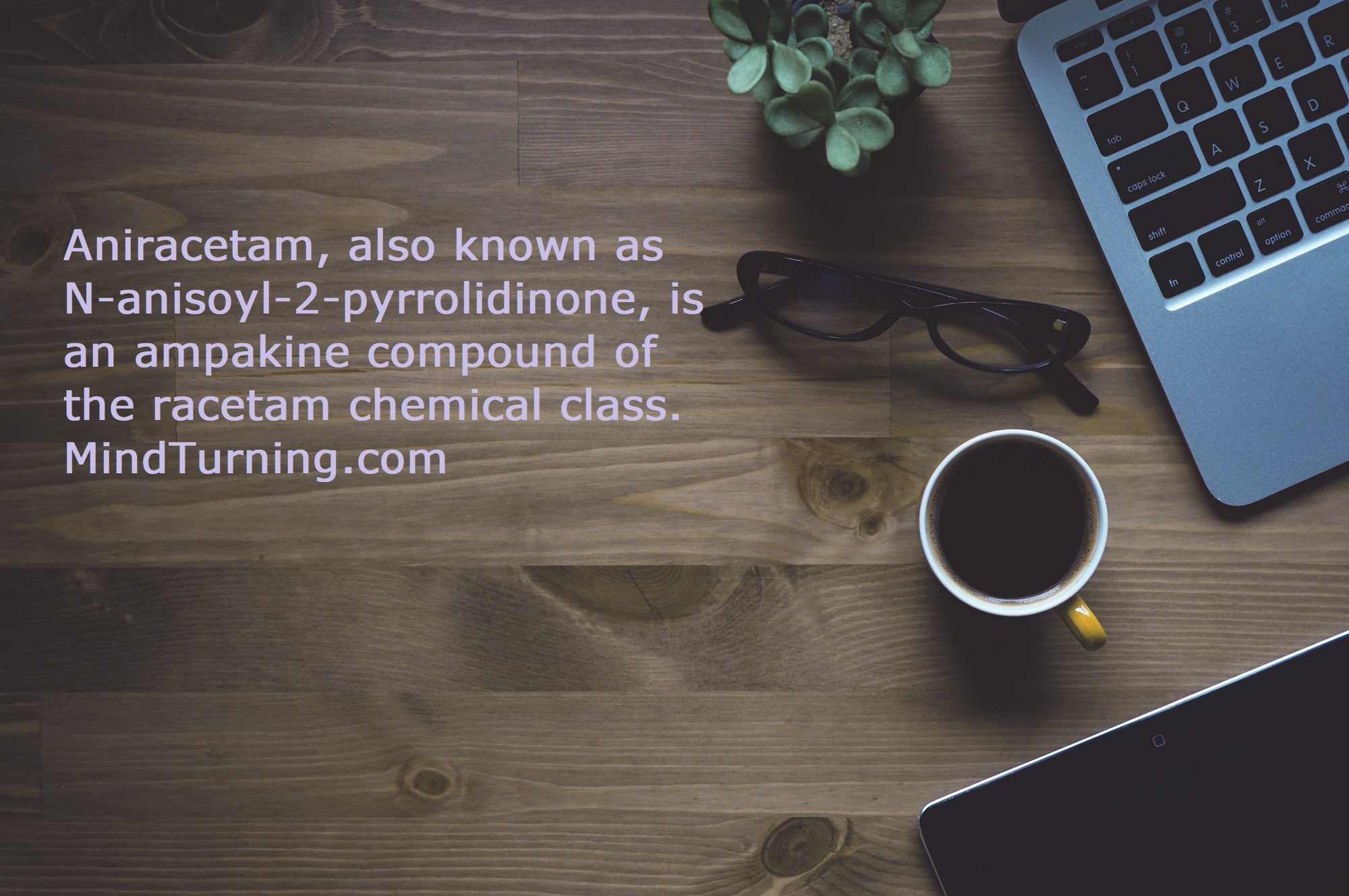Aniracetam: grandfather of the Ampakines, it served a model for many newer and more potent AMPA modulators!
Aniracetam itself has been used in the treatment of strokes in Japan and Alzheimer’s disease in Europe. It went under the name Draganon in Japan, but has since been pulled from the market because of a failed clinical trial.
 Although aniracetam appears to be an AMPAkine with long-term potentiation and neurotrophic factor enhancing properties in in-vitro experiments, it may not the same profile when orally administered. Once absorbed in the gastrointestinal tract aniracetam is almost entirely metabolized, only about 0.2% reaches systemic circulation, much less than what would be necessary for significant AMPA receptor modulation. It may be possible to retain aniracetam’s ampakine effects by taking it sublingually, but that method of administration isn’t well-tested. Aniracetam’s metabolites however seem to be psychoactive. Of aniracetam’s many metabolites N-anisoyl-GABA, p-anisic acid and 2-Pyrrolidinone seem to be the most important, though they aren’t well-studied. 2-Pyrrolidinone seems to facilitate AMPA receptor responses And N-anisoyl-GABA has been noted to enhance acetylcholine, serotonin and dopamine release, possibly through interacting with group II metabotropic glutamate receptors. This could account for aniracetam’s unique mood enhancing effects.
Although aniracetam appears to be an AMPAkine with long-term potentiation and neurotrophic factor enhancing properties in in-vitro experiments, it may not the same profile when orally administered. Once absorbed in the gastrointestinal tract aniracetam is almost entirely metabolized, only about 0.2% reaches systemic circulation, much less than what would be necessary for significant AMPA receptor modulation. It may be possible to retain aniracetam’s ampakine effects by taking it sublingually, but that method of administration isn’t well-tested. Aniracetam’s metabolites however seem to be psychoactive. Of aniracetam’s many metabolites N-anisoyl-GABA, p-anisic acid and 2-Pyrrolidinone seem to be the most important, though they aren’t well-studied. 2-Pyrrolidinone seems to facilitate AMPA receptor responses And N-anisoyl-GABA has been noted to enhance acetylcholine, serotonin and dopamine release, possibly through interacting with group II metabotropic glutamate receptors. This could account for aniracetam’s unique mood enhancing effects.
In general aniracetam’s cognitive enhancing effects aren’t well documented and remain unproven. But it seems to be fairly well tolerated in the short term.

